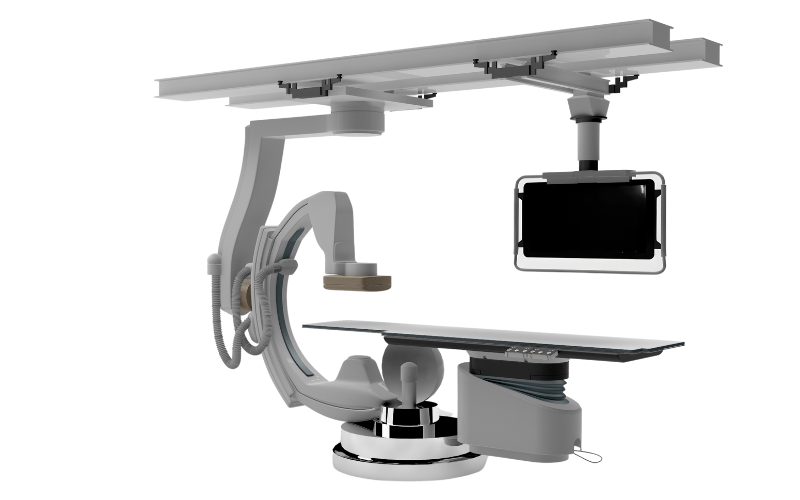Cost Comparison of NG/OG Tube Placement Verification Methods in Hospitals
Don Marcello
Hospitals are constantly looking for ways to improve patient outcomes while managing operational costs. One area that carries surprising financial weight is NG/OG tube placement verification.
Every day, thousands of tubes are placed across U.S. hospitals. Even small improvements in how these placements are verified can lead to significant cost savings and better patient safety.
Let’s look at how different verification methods compare—and how pH testing with RightSpotpH® Indicators offers both clinical and financial advantages.
Financial Impact of Traditional Verification Methods
The Real Cost of X-Ray Verification

X-rays have traditionally been the go-to method for confirming NG/OG tube placement. But they come with more than just image fees:
- $200–$400 per procedure, plus another $50–$100 for radiologist review
- Delays of 30–120 minutes before feeding or medication can begin
- Patient transport requires 1–2 staff members per trip
- Cumulative radiation exposure, especially concerning for neonates
These costs can quickly add up, especially in units where placements are frequent, like ICUs, NICUs, and EDs.
The Risks Behind Auscultation
Listening for air (“the whoosh test”) might seem cost-effective at first—but the clinical evidence doesn’t support it.
- Published research states that up to 56% of blindly placed NG tubes intended for the stomach do not end in the stomach
- Aspiration pneumonia can cost $20,000+ per case
- Misplacement may lead to 7–9 extra days in the hospital
- Legal settlements from tube misplacement incidents can reach into the millions
Despite these risks, auscultation remains common. Many facilities continue using it out of habit or perceived convenience—not actual effectiveness.
Why pH Testing Makes Financial and Clinical Sense
pH testing with the RightSpotpH® Indicator provides immediate, accurate verification without X-rays or radiation exposure. It’s a safer, more efficient method that improves care while reducing costs.
Direct Cost Savings:
- Avoid unnecessary X-rays
- Instant results—verification takes seconds
- Minimal training required
Indirect Benefits:
- Faster start for nutrition and medication
- Fewer complications (e.g., aspiration)
- Shorter hospital stays
- More time for staff to focus on patient care
Broad Impact Across Hospital Settings
Emergency Departments
Rapid verification improves patient flow during time-sensitive scenarios.
ICUs
Immediate confirmation supports faster interventions and reduces complications.
NICUs
Avoiding radiation is critical for fragile neonates. The SmallBore Indicator (ENFit-compatible) is built for this population.
Implementing pH Testing: What to Expect
Transitioning to pH testing is simple when you plan for:
- Updated protocols: Clearly outline when pH is sufficient vs. when X-rays are still needed.
- Quick staff training: Most clinicians learn it with a short demo and return demonstration.
- Tracking impact: Use your quality metrics to monitor complication rates, compliance, and time savings.
How Fast Will You See ROI?
Most hospitals see a return on investment in 3–6 months after adopting RightSpotpH®.
- Each avoided X-ray saves $200-400
- A hospital performing 20 placements daily with a 70% reduction in X-rays could save $30,000+ per month
- Preventing one aspiration pneumonia case saves $20,000-$30,000
- With reduced reliance on X-rays, staff can save hours—freeing time for direct care
The Bottom Line: Better Safety, Lower Cost
pH testing offers rare value in healthcare: improved safety and lower costs. You’ll reduce reliance on radiology, prevent complications, streamline care, and ease the workload on your clinical teams.
The RightSpotpH® Indicator is FDA-cleared, CLIA-waived, physician-developed, and designed to solve a real-world problem in a simple, effective way.
Hospitals that have adopted this approach are already seeing measurable results—clinically and financially.
See It in Action
Want to see how it works at your facility? Schedule a live demo with our team. We’ll walk you through how RightSpotpH® fits into your protocols—and how much you could save.
FAQs: NG/OG Tube Verification Costs
How much can hospitals save with pH testing?
Savings will depend on a hospital’s current reliance on X-rays to confirm placement. Use our ROI Calculator to get an idea of how much time and money your facility could save.
Does pH testing replace X-rays completely?
Not entirely—X-rays still have a role in some cases. But for routine verification, pH testing with the RightSpotpH® drastically reduces the need.
What makes pH testing more reliable than auscultation?
The stomach’s natural acidity (pH 1–5.5) offers a clear, measurable indicator of proper placement—unlike air sounds, which can be misleading.
How does it help in the NICU?
The RightSpotpH® SmallBore is specifically designed for neonatal and pediatric patients. It reduces radiation exposure by providing safe, bedside verification—no X-rays needed for most placements.
It’s also ENFit-compatible, supporting safer enteral connections and aligning with current NICU initiatives to prevent misconnections. For fragile patients, this means faster, safer care using a device built just for them.
How much training is needed?
Training is quick and straightforward—most hospitals complete rollout with a 30-minute in-service session. RightBio Metrics also provides full support and resources.


